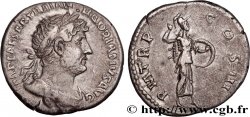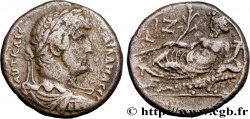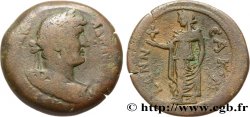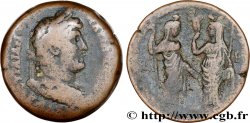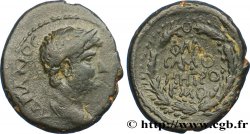Live auction - fme_711941 - HADRIAN Sesterce (Padouan)
Чтобы принять участие в торгах, вы должны войти в систему и стать подтвержденным участником аукциона. Войдите, чтобы сделать ставку. Ваш аккаунт будет подтвержден в течение 48 часов. Не ждите до закрытия торгов, чтобы зарегистрироваться.Сделав ставку на данный товар, вы вступаете в юридическое соглашение на покупку выбранного товара и нажатием кнопки «Сделать ставку» подтверждаете принятие вами условий интернет-аукционов cgb.fr.
Ставка может бить сделана только в полном эквиваленте евро. Торги закроются согласно времени, указанному в описании товара, все ставки, сделанные после закрытия торгов, учитываться не будут. Не следует откладывать предложение вашей ставки до последнего момента, так как система может не успеть обработать вашу заявку, и ваша ставка не будет принята. Более детальную информацию вы найдёте здесь: FAQ по интернет-аукционам.
Все ставки победителей подлежат комиссии 18%.
Все ставки победителей подлежат комиссии 18%.
| Оценить : | 1 000 € |
| Цена : | Нет ставки |
| Максимальная предлагаемая цена : | Нет ставки |
| Конец торгов : | 08 March 2022 18:47:24 |
Тип Sesterce (Padouan)
Дата: 132-134
Монетный двор / Город: Roma
Металл: bronze
Диаметр: 34,5 mm
Ориентация осей монеты: 6 h.
Вес: 28,81 g.
Век: lisse
Редкость: R1
Комментарии о состоянии
Patine marron avec de l’usure sur les reliefs. Présence de quelques coups et rayures, notamment à l’avers. Bel aspect
Лицевая сторона
Аверс: легенда: HADRIANVS - AVGVSTVS.
Аверс: описание: Buste drapé et cuirassé, tête nue d’Hadrien à droite, vu de trois quarts en arrière (A*2).
Аверс: перевод: “Hadrianus Augustus”, (Hadrien auguste).
Обратная сторона
Реверс: легенда: FELI-CITATI// A-VG // COS III P P/ S C.
Реверс: Описание: Galère voguant à droite avec une partie de la légende sur la voile.
Реверс: перевод: “Felicitati augusti/ Senatus Consul tertium Pater Patriæ”, (À la Félicité de l’auguste/ consul pour la troisième fois père de la patrie avec l’accord du Sénat).
Комментарий
Pour le revers, il existe un nombre très important de variétés de combinaisons entre le mat, les rames, le gouvernail, et les enseignes. “Il existe un coin de Padouan, dont voici les particularités qui le distinguent de toutes les médailles authentiques que j’ai vues, sans cependant que je veuille dire que ce faussaire l’ait inventé : 1° le buste est nu à droite, drapé et cuirassé ; 2° les rameurs sont au nombre de dix sur le premier rang et de huit sur le second ; 3° Neptune y tient un sceptre.” H. Cohen, Paris, 1882, vol. II, p. 167. Nous sommes donc en présence de la copie, voir d’une invention de monnaie romaine, coulé à la Renaissance au XVIe siècle et ensuite surmoulé pendant trois siècles, appelés Padouan, du nom de la ville de Padoue dont était originaire au départ les faussaires fabriquant ce type de pièce, le plus connu d’entre eux, s’appelant Cavino.
For the reverse, there are a very large number of varieties of combinations between the mast, the oars, the rudder, and the ensigns. “There is a Paduan coin, the particularities of which are as follows which distinguish it from all the authentic medals that I have seen, without however wanting to say that this forger invented it: 1° the bust is naked on the right, draped and cuirassed; 2° the rowers are ten in number on the first row and eight on the second; 3° Neptune holds a scepter.” H. Cohen, Paris, 1882, vol. II, p. 167. We are therefore in the presence of a copy, or even an invention of Roman coin, cast during the Renaissance in the 16th century and then over-molded for three centuries, called Padouan, from the name of the city of Padua where the counterfeiters manufacturing this type of coin originally came from, the best known of them being called Cavino.
For the reverse, there are a very large number of varieties of combinations between the mast, the oars, the rudder, and the ensigns. “There is a Paduan coin, the particularities of which are as follows which distinguish it from all the authentic medals that I have seen, without however wanting to say that this forger invented it: 1° the bust is naked on the right, draped and cuirassed; 2° the rowers are ten in number on the first row and eight on the second; 3° Neptune holds a scepter.” H. Cohen, Paris, 1882, vol. II, p. 167. We are therefore in the presence of a copy, or even an invention of Roman coin, cast during the Renaissance in the 16th century and then over-molded for three centuries, called Padouan, from the name of the city of Padua where the counterfeiters manufacturing this type of coin originally came from, the best known of them being called Cavino.







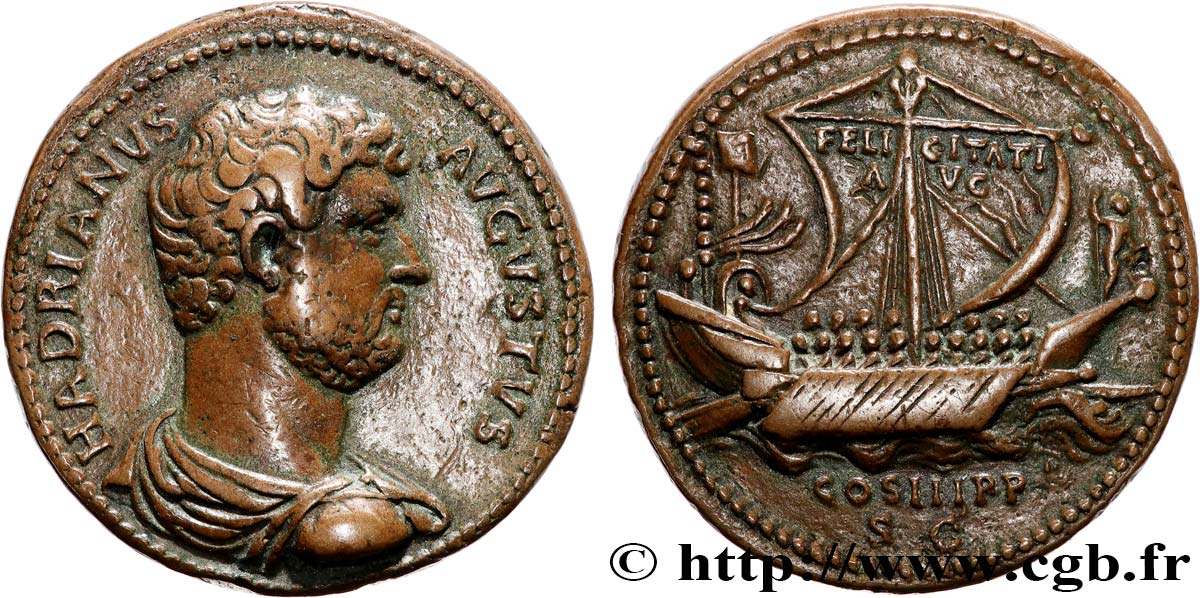
 Cообщить об ошибке
Cообщить об ошибке Распечатать страницу
Распечатать страницу Отправить мой выбор
Отправить мой выбор Задать вопрос
Задать вопрос Consign / sell
Consign / sell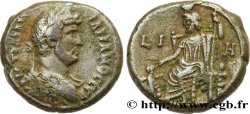
 Информация
Информация